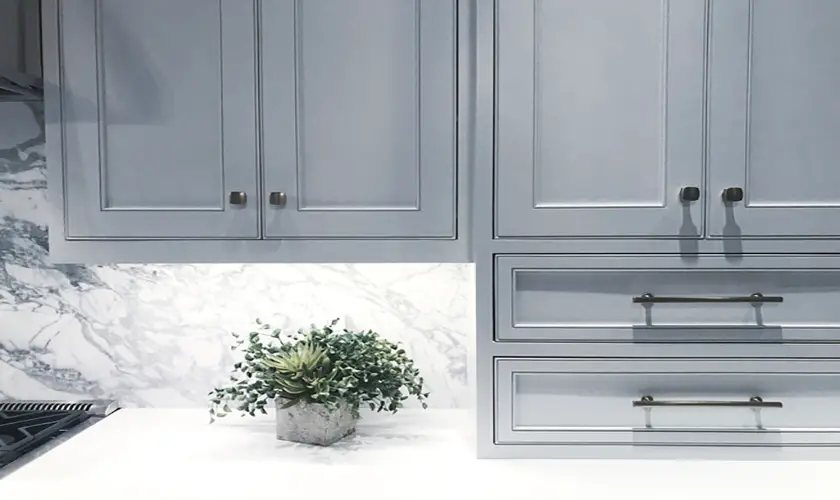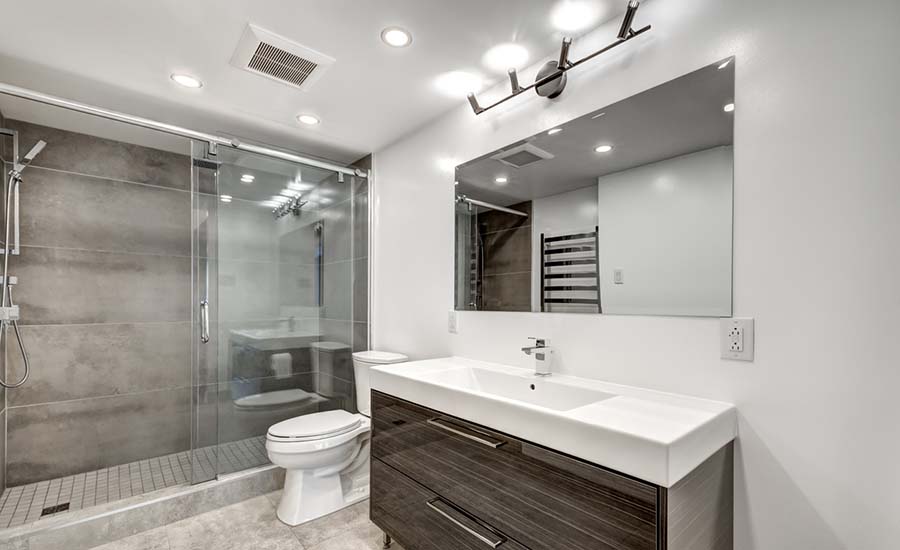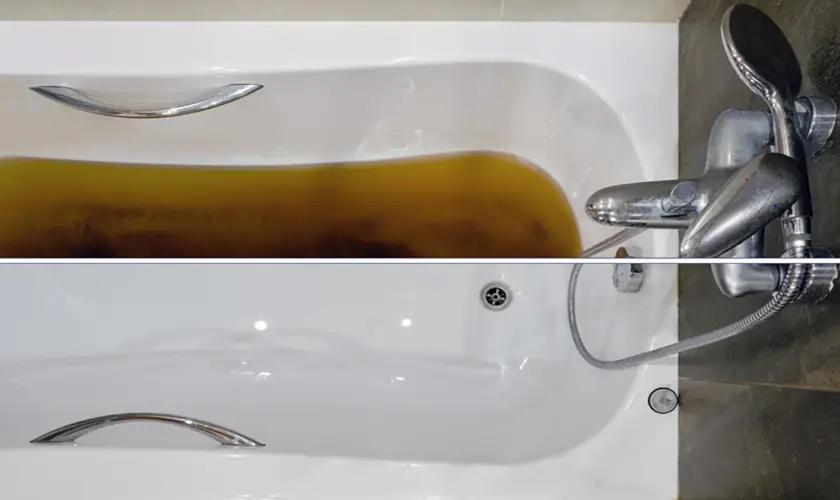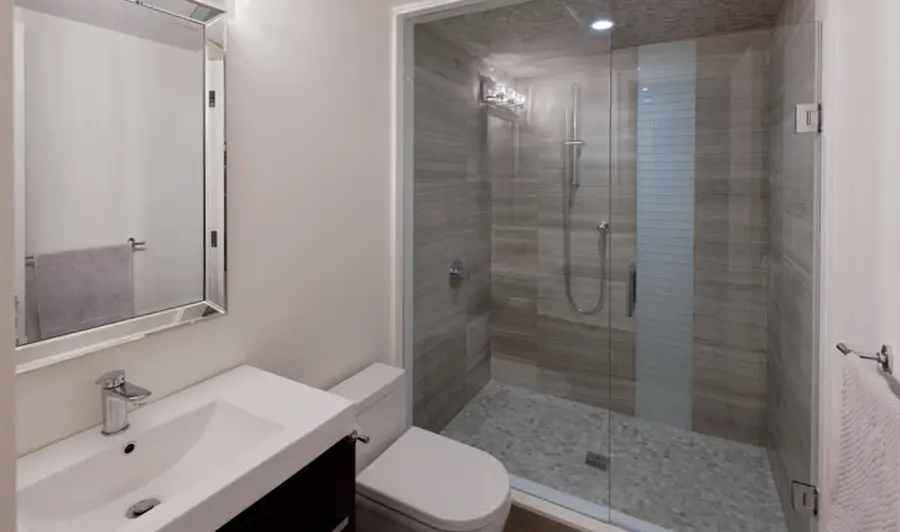
If you’ve ever spent time living with a clogged toilet, you know what an inconvenience it can be. Unfortunately, plumbing is one of the busiest industries in the country, which means a professional plumber won’t always be able to make it to your home when you need them. Therefore, it’s good to have a few tricks up your sleeve when your toilet clogs.
Clogged toilets are extremely common, and some clogs are more severe than others. If you don’t have immediate access to a plumber, there are plenty of ways that you can unclog your toilet. Because you won’t always have a toilet plunger, you can free up your toilet using a plumbing snake, a wire coat hanger, a cup of vinegar, and various other household items.
If you have a toilet or septic system prone to trouble, you’ve come to the right place. Some clogs are simply the result of using too much toilet paper, but others stem from a deeper issue with your drain lines or sewer line. However, no matter what’s causing your toilet drain clogs, we’ll likely have a resolution in this article.
What Causes Your Toilet to Clog?
As with all things, the best way to fix a clogged toilet is to avoid having one in the first place. Toilet clogs can result from a wide variety of items ranging from an old plumbing system with cast iron pipes to flushing things down your toilet that don’t belong there. Here are a few of the most common causes of toilet clogs.
- Flushing Things that Don’t Flush
The only things that should go down your toilet are toilet paper, water, and human waste. Trying to flush paper towels, toys, feminine products, and other foreign objects down your toilet is a recipe for disaster.
- Too Much Toilet Paper
Everyone uses different amounts of toilet paper when they use the bathroom. However, if you’re the type of person that uses an abundance, you should remember to flush several times to limit the amount of paper per flush. It costs you about two cents to flush your toilet, and it will cost much more if you have to call a plumber out for repairs.
- Outdated Septic System
Depending on when you or someone else built your home, there’s a good chance that you simply have old and outdated pipes. Cast iron was the material of choice in the early to mid-1900s because of its durability and longevity. However, what plumbers didn’t realize at the time, is that cast iron pipes deteriorate from the inside out.
As a result, toilet paper and other waste snag onto bits and pieces of broken off cast iron. Temporary fixes such as plunging and drain snakes will fix minor problems, but the only way to permanently prevent clogs is to replace your entire septic system.
- Malfunctioning Septic Tank
In the same way, your sewage pipes can cause issues, and so can your septic tank. Your tank gets designed to never overfill or plug, but it can happen due to a plumbing malfunction. When this happens, waste will have nowhere to go and will back up into your toilet. You are better off leaving septic tank problems to the professionals who know what they’re doing.
- Tree Roots
Although it’s rare, tree roots can grow into your septic lines. Tree roots grow indiscriminately in all directions and with a ton of force. If your underground sewage pipes happen to be too close to one, their roots could potentially rupture and clog your sewage system.
As you can see, some of these problems will require the skills of a pro. However, minor clogs and plugs are well within your DIY scope of practice.
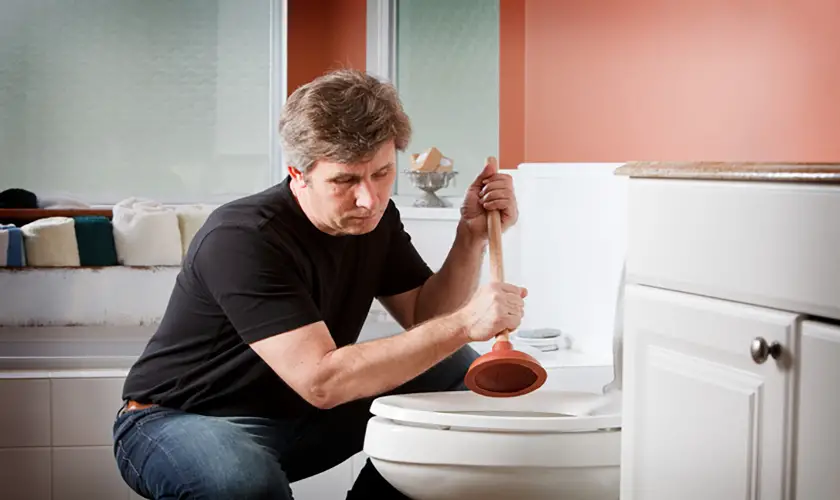
Always Start With a Toilet Plunger
No matter what you think is causing your toilet issue, you should always start with a plunger. Plungers are one of the oldest, easiest, and most effective ways to unclog a toilet. To be effective with a plunger, you need one that can form a good seal around the toilet drain. They work by suctioning water back and forth inside the drain, often enough to knock clogs free.
When plunging, it’s a good idea to start slow and work your way into more vigorous plunges. While it might sound silly, there’s a bit of an art to plunging, which is why it’s so effective. If the plunger doesn’t do the trick, you likely have a more serious plumbing issue or clog that will require more invasive measures.
The Dish Soap Method
If you don’t have a plunger or if it doesn’t work, the next thing you should try is the dish soap method. This method is easy, cheap, and relatively effective at freeing minor clogs. Here’s how it works.
- Use a sponge or vacuum to get most of the toilet water out of the bowl.
- Take around ¼ cup of dish soap, Dawn or other, and pour it directly into the toilet bowl.
- Give the soap five minutes to sit and work into the drain pipe and toilet trap.
- After five minutes, pour a gallon of water or hot water into the toilet bowl to join the soap.
- Give this concoction five to ten minutes to sit and do its work.
- After the allotted time, flush the toilet and see if the soap and warm water freed up the clog.
Warm Water in the Drain
If you forgot to go shopping and ran out of dish soap, you can try the above trick without soap but with hotter water. You’ll again have to remove excess water from the toilet bowl with a sponge and bucket or a shop vac. Normally to empty the toilet, you would shut off the water supply and flush. However, this will only worsen the problem if there’s a clog present.
Take around a gallon of hot water, even boiling, and dump it straight into the empty toilet bowl. If the clog isn’t a solid object and is only toilet paper, there’s a good chance that the hot water will take care of it.
Chemical Warfare
Typically, you want to avoid using chemical solutions to unclog your toilet. However, bleach is an option if warm water, soap, and your plunger aren’t doing the trick and you don’t have the other household items you need to repair a blocked toilet. Two or three cups of bleach into the toilet will do the same thing that dish soap does.
Pour it in, wait for several minutes, then add a couple of cups of powdered soap if you have it, but this isn’t always necessary. Try flushing the toilet and see what happens. Bleach is less invasive than chemical drain cleaners and is a better option if it works.
Use a Toilet Auger
Professional plumbing services often use a toilet auger for in-depth issues. Toilet augers or snakes are long and thin and free up clogs by snaking through your drain lines and knocking things out of the way. They’re very long and highly effective, so they’re used by rooter services across the country.
However, toilet augers are also more expensive than most other methods we’re looking at on this list.
If You Don’t Have a Toilet Snake, Use a Wire Hanger
Not everyone has ready access to a toilet snake or auger, so you’ll have to get creative. When you stop and think about it, a wire hanger does the same thing that an auger does. You can stick the pointy end into your toilet, and depending on where your clog is, you can reach it with the hanger and poke it free.
Keep in mind that most hangers are less than three feet long, and they don’t bend as easily as an actual toilet snake. However, with a bit of luck and persistence, a wire hanger is a free and easy way to undue pesky clogs.
Vinegar and Baking Soda
Whether you’re trying to clean a stain, get rid of corrosion, or unclog a drain, vinegar, and baking soda are your two best friends. They’re two of the most versatile and practical household items to keep on hand, and they’ll bail you out of many situations.
To use these items with a toilet clog:
- Mix one cup of vinegar with one cup of baking soda.
- Use a sponge and bucket or a shop vac to get any standing dirty water out of your toilet so the concoction can do its work.
- Pour the mixture straight into the toilet bowl and give it around thirty minutes to do its work.
After the 30 minutes are up, pour a cup of hot water into the bowl, flush, and see if you fixed the clog. If not, try the remedy once more and flush again. Hopefully, your toilet will drain on the first or second flush.
Try a Dry Vacuum
Even if a dry vacuum doesn’t free up your clog, they’re very handy to lower the water level in your toilet bowl and give many of the above methods a chance. If your suction is strong enough, you might be able to suck clogs right out of your toilet.
Don’t Forget the Toilet Brush.
While using a toilet brush can work in some instances, it’s the last resort when you don’t have a plunger, drain snake, or any of the above household items. If it’s big enough, your toilet brush can work similarly to how a plunger does. Stick the bristled end of the brush into your toilet drain, do your best to form a seal, and start plunging.
If you’re fortunate, there’s a chance that the brush will act as a plunger and create enough suction to knock clogs free. However, I wouldn’t put too much stock or hope into this working, and you’d be better off going to your local hardware store and purchasing a plunger or toilet auger.
Get Super Involved
If nothing else is working and you’re determined not to call a plumber, you can take things to the next level by removing the toilet. Keep in mind that you’ll have to replace the wax ring if you go this route, and you might also have to replace the toilet flange and bolts. However, taking this measure might be the only way to repair serious clogs without contacting a pro. Here’s how it works.
- Turn off the water supply to the toilet.
- Use a shop vac or sponge and bucket to remove water from the toilet bowl.
- Have an old towel and other items ready to mop up dirty water.
- Undo the bolts that hold the toilet in place and wiggle it free of the wax ring.
- Lift the toilet and set it aside to get a view of the toilet drain and drain pipes.
- You can also see the back of the toilet and the toilet trap to see if the problem is with the toilet itself or the ensuing drain lines.
- With the toilet free, there’s a good chance you’ll be able to manually remove any foreign objects or items that are causing the clog.
- When re-installing the toilet, make sure to use a new wax ring. You might also need a new toilet flange if the old one is damaged.
Related Questions
What are the easiest ways to unclog a toilet?
The easiest and most successful method to unclog a toilet is to start with a plunger as your first step and proceed to more invasive techniques. Toilet augers, household items, dish soap, and similar options aren’t as effective or easy as a plunger, but they work.
Can I use Drano and other chemical products to unclog a toilet?
Drano is a very effective drain cleaner, but you’ll need a specific type of Drano for toilet clogs. Try less chemically invasive methods first, but Drano is an option if all else fails.
Can I unclog my toilet myself?
As long as your clog isn’t getting caused by a malfunctioning septic tank or system or invasive tree roots, there’s an excellent chance you can fix the problem yourself.
Final Thoughts
Toilet clogs are one of the most common problems that can befall your plumbing system. Most clogs are easy to fix with a plunger or one of the methods listed above, but some will require professional assistance. However, with enough time and persistence, you can activate your inner plumbing spirit and save yourself some money by fixing the clog yourself.



